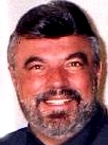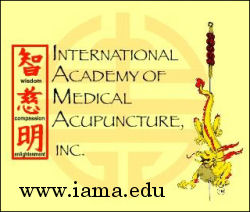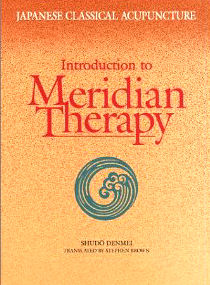Acupuncture & TCM Articles

Acupuncture Articles
by John A. Amaro L.Ac., Dipl.Ac.(NCCAOM), DC
 Dr. Amaro is an internationally known author, lecturer and practitioner beginning his practice of Acupuncture and Chiropractic in 1971. He has led 13 diplomatic Acupuncture study tours of The People's Republic of China escorting more than 500 doctors and practitioners. He has personally studied Acupuncture in nine separate Asian nations. Dr. Amaro is an internationally known author, lecturer and practitioner beginning his practice of Acupuncture and Chiropractic in 1971. He has led 13 diplomatic Acupuncture study tours of The People's Republic of China escorting more than 500 doctors and practitioners. He has personally studied Acupuncture in nine separate Asian nations.
He has received Certification in Acupuncture through the Columbia Institute of Chiropractic in 1973. This was one of the first Acupuncture postgraduate education programs for physicians in North America commencing in 1972.
He has been certified by the Waseda Acupuncture College in Tokyo, Japan in 1974 and graduated from the Chinese Medical Institute, Kowloon, China in 1976. He had previously taken postgraduate studies at the Tai Chung Medical School Taipei, China 1973.
"Why every full scope D.C. should practice Acupuncture /Meridian Therapy"
John A. Amaro L.Ac., Dipl.Ac.(NCCAOM), DC
Utilizing Acupuncture or Meridian Therapy may be one of the most rewarding procedures a doctor can do for their clinical practice in addition to the rewards to their personal and family financial life. The sheer amount of clinical success, ease of application, rewarding patient testimonials and significantly increased financial reward makes adding Acupuncture/Meridian Therapy to a practice a natural. Acupuncture/Meridian Therapy has been internationally recognized as one of the simplest and most effective treatments for treating both chronic and acute pain. When acupuncture is paired with Chiropractic it creates a treatment modality which has few equals. It must be pointed out like Chiropractic, “Acupuncture is a principle, not a technique’ and therefore may be practiced by a variety of physiotherapeutic stimulation devices thus “Meridian Therapy’.
It would be quite normal and usual for a doctor practicing just four days a week to increase their income by a minimum of $100,000.00 per year by the simple administration of Acupuncture and EMI™ examinations in just 10 patients a day. Ten patients a day to put it in perspective, is only five in the morning and five in the afternoon. This yearly figure is figured by assuming a simple acupuncture fee of just $40.00 per treatment which is actually on the lower side of usual and by only conducting two EMI™ exams a day at $50.00. Those fees times seeing ten patients a day only four days per week totals $500. per day, $2,000. per week, $8,000. per month or $96,000. per year. Anyway you look at it this amounts to approximately an additional $100,000. yearly income.
The more dedicated chiropractic/medical physician utilizing acupuncture generally conducts four exams per day (two in the morning and two in the afternoon) and will perform acupuncture on a minimum of twenty patients per day. Thus the $100,000.00 per year figure previously quoted escalates to over $200,000.00 per year. This is in addition to the practitioners´ regular practice income.
In terms of a doctor performing a particular treatment for a patient in terms of clinical success, there are few procedures that compare to the combination of acupuncture (either invasive or non-invasive) and chiropractic. When applied through electronic stimulation it is often billed as Trans Cutaneous Electric Nerve Stimulation (TENS). Doctors sometimes bill the procedure as Trigger Point Therapy or Cutaneo Viscero Reflex Therapy. However, those doctors practicing within the scope of their license may bill and receive third party pay under the treatment of “Acupuncture’. It is very common amongst the profession to bill for Acupuncture or Meridian Therapy separately and establish these procedures as a cash practice.
As an adjunct to the practice of Chiropractic, Acupuncture and/or Meridian Therapy have been a vital economic and clinical part of thousands of D.C.´s practices for more than 30 years. Acupuncture was first introduced to the profession in 1972 through the New York Chiropractic College Department of Post Graduate and Continuing Education which was shortly followed by National College of Chiropractic now National University of Health Sciences, Logan College of Chiropractic and Texas College of Chiropractic. In addition, Northwestern University of Health Sciences, University of Bridgeport, Cleveland Chiropractic College, Canadian Memorial Chiropractic College, Los Angeles University of Health Sciences and Parker Chiropractic College all conduct professional programs in Acupuncture. This represents a total of ten Chiropractic colleges´ currently teaching acupuncture as part of the postgraduate or undergraduate program of the college. All of the Colleges meet or exceed the academic recommendations for acupuncture training for physicians of the World Health Organization (WHO). As a result of the professional and public demand for acupuncture by Doctors of Chiropractic, 37 States have enacted legislation or have regulated the practice through their respective State Board of Chiropractic Examiners. Acupuncture is clearly a vital part of the Chiropractic profession.
Introduction to Meridian Therapy
 
In 2002, The National Board of Chiropractic Examiners (NBCE) recognizing the vital role acupuncture had become to the practice of chiropractic began offering its Acupuncture Certification Examination. This examination certifies academic and clinical competence for those who have successfully completed a recognized certificate program in acupuncture through one or more of the ten Chiropractic colleges offering acupuncture education. Many State Boards are now utilizing the NBCE acupuncture examination as the required examination to practice acupuncture in the state for Doctors of Chiropractic.
Doctors must understand that just like Chiropractic, “Acupuncture is a principle not a technique’. As a result, there are a variety of techniques, styles and procedures which may be employed in the practice of acupuncture. With the advent of modern technology such as electronics and laser, there are a number of modalities which may be successfully utilized to stimulate acupuncture points other than the insertion of a needle. Furthermore, it has been estimated that 60% of the population of the United States would never consider having a needle inserted into them for the purpose of acupuncture due to needle phobia. Since the principle of acupuncture remains the same, the pleasant gentle stimulation of an inexpensive laser light or electronic stimulation device other than a needle literally opens up the potential for millions of patients nationwide who may now consider non-invasive acupuncture who would have never thought twice about it before. Acupuncture principles being practiced with non-invasive stimulation devices through the various State Boards physiotherapy laws are generally regarded as “Meridian Therapy’.
Acupuncture when used as an adjunct to an existing practice of chiropractic is exceptionally simplistic to learn and to incorporate in a typical practice. The practice and study of Traditional Chinese Medicine (TCM) or Oriental Medicine is another matter. This specialty which includes herbal and botanical prescriptions as well as acupuncture as a part of its philosophy is an extremely difficult and challenging complete Asian healing system. It is ancient in its derivations and based in part on legend, myth, folklore, superstition and shamanism. However, it can be quite effective in clinical practice when applied by a competent practitioner. The majority of students studying TCM attend school for approximately three year´s part time as compared to the intense full time class room and clinic schedule of chiropractic or medical school. It has been said and generally recognized, to attain competency in TCM, 25 years of practice is necessary.
Acupuncture on the other hand, as a separate and distinct healing art which differs from Oriental Medicine is easy to learn, easy to utilize in practice, is not time consuming when practiced in the Euro-Asian and Japanese styles, allows the doctor to see an unlimited number of patients rather than the 6-8 a day of the TCM practitioner and may be a reimbursable modality. The overwhelming majority of D.C.´s and M.D.´s who practice the principles of acupuncture for pain relief and condition response, do not immerse themselves in the complexities and questionable practices and diagnoses of Traditional Chinese Medicine (TCM) but may refer for it if deemed necessary.
Acupuncture when practiced with non-penetrating laser, electronic or simple pressure stimulation may be referred to as “Meridian Therapy’. This is especially true of those practitioners in the few States that do not yet allow for the practice of “Acupuncture’. Meridian Therapy is nothing more than the utilization of the principles of acupuncture but utilizing accepted physiotherapy modalities such as TENS, light, percussive therapy, ultrasound etc. for therapeutic application. Everything remains the same philosophically with the exception of the stimulation devices.
The obvious first approach to adding acupuncture into a clinical practice is to become competent through successful completion of one or more of the accelerated acupuncture programs offered by or through our Chiropractic colleges. Most States require 100-300 hours of postgraduate education in order to practice acupuncture which may be obtained through the curricula of the college offering acupuncture or by combining programs from various colleges to meet the hour requirement of the State.
Once the doctor feels confident and competent and has meet the educational requirements for the State, incorporating the procedure of acupoint stimulation becomes natural and easy. Acupuncture may be employed on a variety of levels from local pain relief as an adjunct to a chiropractic procedure to complete meridian balancing in the treatment of somato-viscero conditions. Acupuncture may be utilized as easily as general stimulation on tender spots in the area of pain termed “Ah-Shi’ points to stimulation over surgical or other scar tissue which disrupts the body´s energy fields. With contemporary “Electro Meridian Imaging’™ (EMI)™ acupuncture diagnosis of involved pathways and the selection of the proper acupoints to bring about balance is an incredibly accurate, reliable, speedy and low overhead high financial yield diagnostic modality. It requires minimal operational skill and examination evaluation is clinically significant for the doctor who has an academic background in the working mechanisms of acupuncture. The entire diagnostic procedure takes less than two minutes to perform. It may focus specifically on musculoskeletal or somato-viscero conditions.
This diagnostic procedure replaces the questionable, time consuming and unreliable ancient art of pulse diagnosis long considered the cornerstone of Oriental Medicine.
With all of the benefits both clinically and financially it is inconceivable that a full scope practitioner would not want to add this incredible dimension to healing to their armamentarium. It behooves the practitioner reading this with a background in acupuncture to take additional refresher programs to get their enthusiasm and skills honed. For those who have no background in acupuncture, it is not too late in your professional life to add this exciting dimension to practice in 2004.
Best Wishes
| 